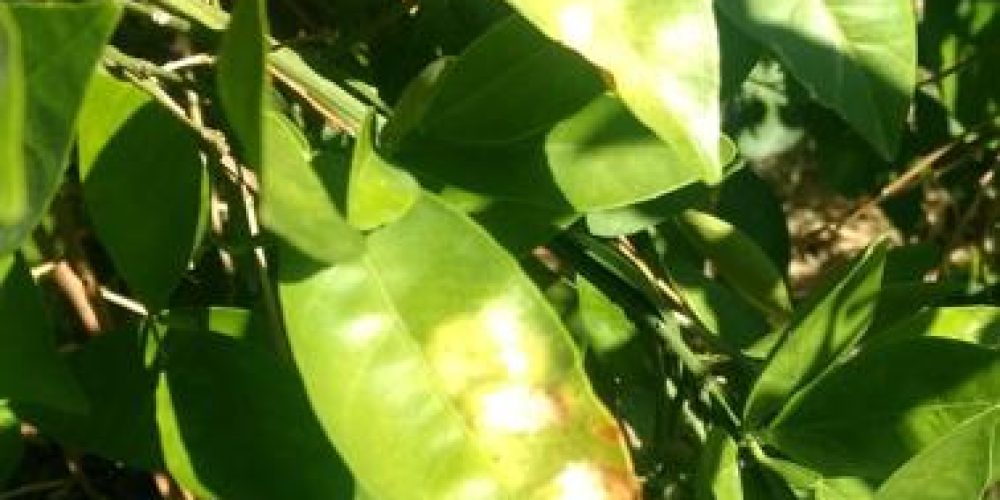Table of contents of the article
ToggleMesophyll collapse is a disease that affects lemon leaves and leads to deterioration of plant health. This article from the “WORLD OF PLANTS” website provides an explanation of the causes of mesophyll collapse disease in lemon plants and effective methods of prevention and treatment.
Disease name: Mesophyll collapse in lemon plant
Scientific name: mesophyll collapse
Type of disease: change in weather conditions
Causes of mesophyll collapse disease in lemon plants
It is a non-pathogenic disorder that affects lemon leaves, and until now the cause of this disease is not known. This phenomenon is common during the fall, as the shock of sudden cold temperatures, which is exacerbated by the wind, leads to the collapse of the mesophyll, which consists of one or more layers of cylindrical cells stacked on top of each other. Some towards the top of the leaf.
Symptoms of mesophyll collapse in lemon plants
The yellow leaves are more susceptible to this strange disorder, especially during the fall when the length of the days becomes shorter, which leads to sudden drought, which is a strong incentive for the leaves to wilt and dry quickly and remain on the tree, but often the affected leaves suddenly fall off.
Development cycle of mesophyll collapse disease in lemon plants
The disorder begins in the form of transparent, irregular areas of different sizes spread throughout the leaf blade. One or more light green spots may appear, then they later turn brown when cells within the tissue die, giving these areas a transparent appearance. They are not affected. Barrier and epidermal tissues initially die but may die later.
Suitable conditions for the spread of mesophyll collapse disease in lemon plants
Low soil moisture and hot, dry winds are for this reason. Water shortages also cause mesophyll collapse, but mite feeding, damaged root systems and excessive transpiration are also associated with mesophyll collapse. Nutritional imbalances in lemon plants also cause mesophyll collapse.
Losses resulting from the spread of mesophyll collapse disease in lemon plants
Mesophyll collapse disease is not serious, and trees recover naturally the following spring with little or no loss in production.
Control and preventive measures for mesophyll collapse disease in lemon plants
- Good fertilization helps the plant withstand the change in weather.
- Build windbreaks to avoid injury.
- Cultivation of disease-resistant species.
- Constantly monitor the crop to detect and treat the disease.
In conclusion, we would like to note that we, at the world of plants website, offer you all the necessary services in the world of plants, we provide all farmers and those interested in plants with three main services::-
- Artificial intelligence consulting service to help you identify diseases that affect plants and how to deal with them.
- Blog about plants, plant diseases and care of various crops ... You are currently browsing one of her articles right now.
- An application that provides agricultural consultations to clients, as well as a service for imaging diseases and knowing their treatment for free – Click to download the Android version from Google Play Store، Click to download the IOS version from the Apple App Store.




